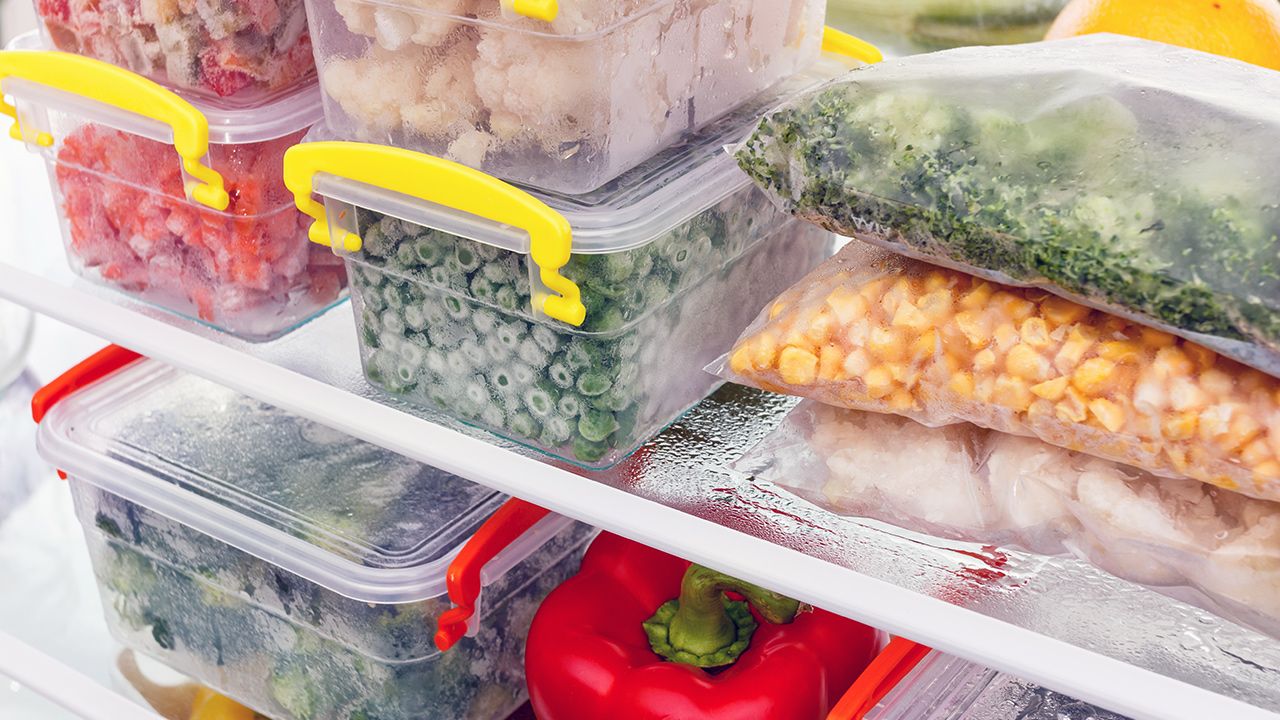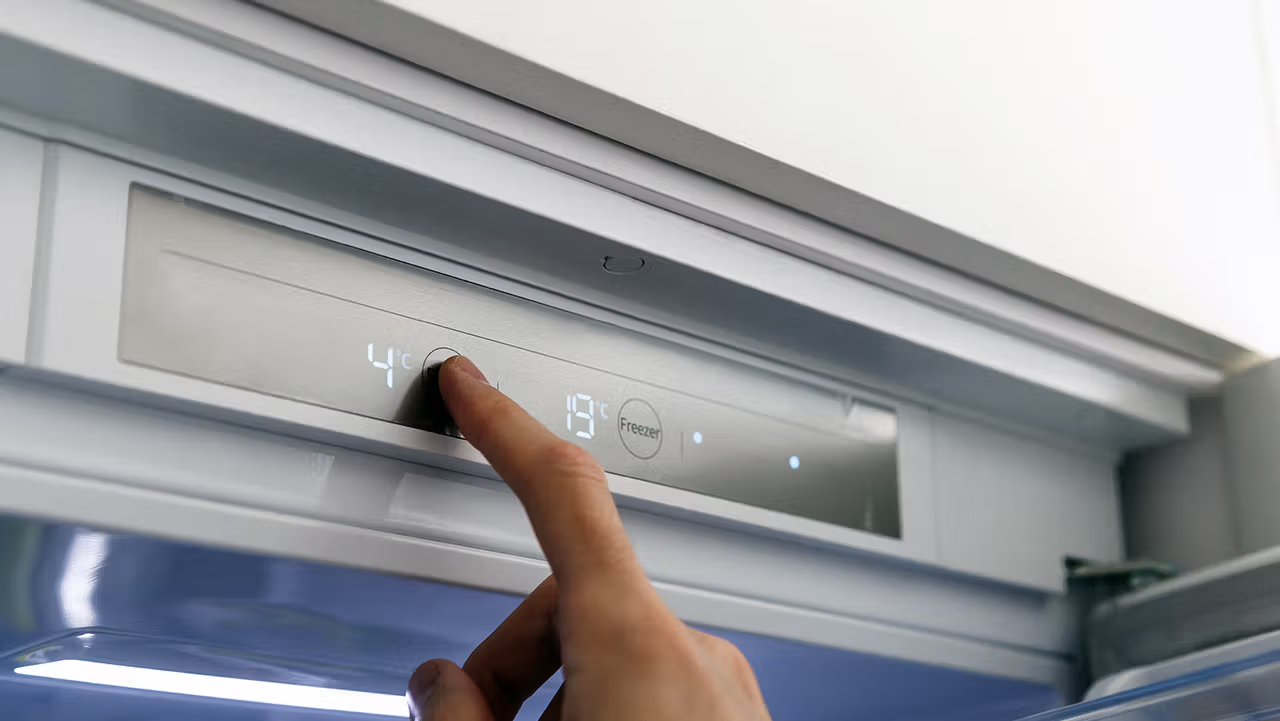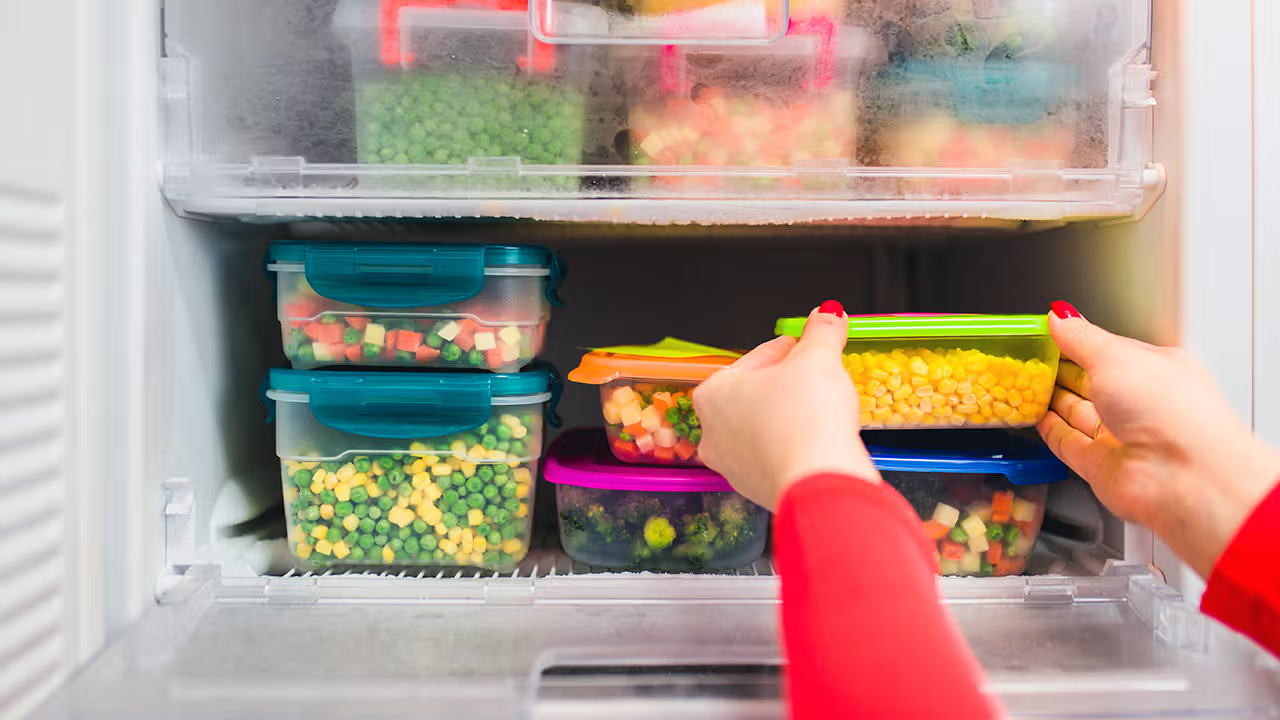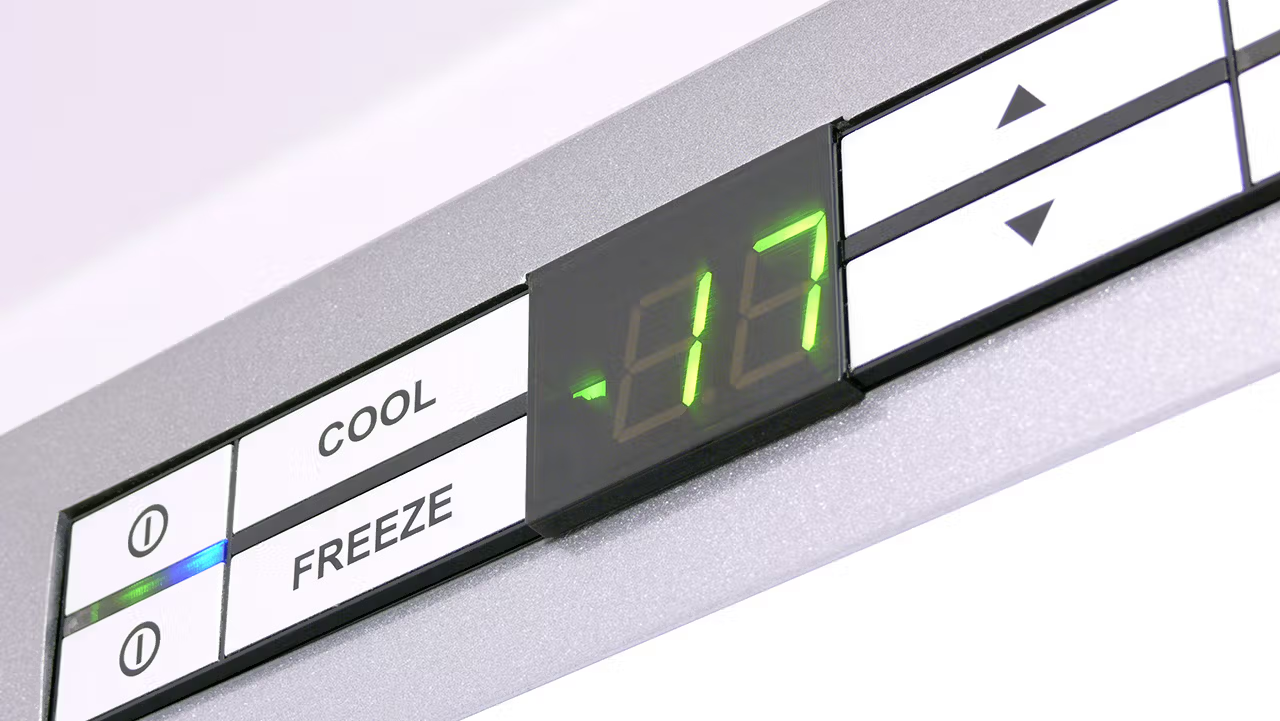
Every household depends on its refrigerator and freezer to keep food safe, fresh, and appetizing. Yet, many overlook the crucial role of the ideal freezer temperature in prolonging food storage life and preserving the quality of frozen food. Picture this: It's a warm summer evening, and you're reaching into your freezer for that ice-cold treat. But instead of the smooth, creamy texture you're expecting, you're met with ice crystals, a clear sign of freezer burn. It's not just about taste; the right freezer temperature ensures minimal food waste, saving you money in the long run.
But how cold should your freezer actually be? Is there such a thing as too cold? Achieving the balance between energy efficiency and food quality can seem like a tightrope walk. Too much cold air and your food freezes too quickly, leading to those dreaded ice crystals. Not cold enough, and perishable foods won't stay fresh for long, increasing the risk of foodborne illnesses. Understanding the optimal temperature range for your freezer is more than just about the quality of food; it's also about ensuring your appliance works efficiently, conserving energy and reducing bills.
Join our newsletter
Stay on top of the latest in landscaping and lawn care with one valuable tip right in your inbox every Saturday morning.
The Relationship between Freezer Temperature and Energy Efficiency
Your freezer is one of the appliances that stays on 24/7 in your home, making its energy consumption a significant consideration. How you manage your freezer temperature can substantially impact both your wallet and the environment.
How Temperature Settings Impact Your Power Bills:
- Initial Setting: When you first set your freezer temperature, it works hard to reach that optimal temperature. The closer this is to 0°F (-18°C), the more energy-efficient and cost-effective it will be in the long run.
- Fluctuations: A freezer that constantly fluctuates in temperature works harder to maintain the set point, increasing energy use. Consistency in your freezer temp is key to avoiding spikes in power consumption.
- Overcooling: Setting your freezer to an excessively cold setting will make it work overtime. This not only increases energy consumption but also can lead to unnecessary hikes in your power bills.
- Regular Maintenance: Keeping your freezer in good shape, ensuring the door seals are intact and the coils are clean, can prevent it from overworking. This translates to a steadier temperature inside and reduced energy costs.

Environmental Benefits of an Optimal Freezer Setting:
- Lower Carbon Footprint: An energy-efficient freezer consumes less electricity, reducing carbon emissions from power plants.
- Reduced Strain on Power Grids: Especially during peak times, having thousands of households with energy-efficient freezers can minimize the demand on power grids.
- Decreased Use of Refrigerants: Freezers operating at the correct temperature are less likely to develop leaks. Fewer leaks mean less need for refrigerants, which can harm the environment if not properly managed.
- Limiting Food Waste: By maintaining the recommended temperature, your frozen food remains safe to eat indefinitely, reducing the likelihood of throwing away spoiled food. Reduced food waste not only conserves resources used in food production but also decreases methane emissions from decomposing food in landfills.
In the big picture, something as simple as setting the right freezer temperature has a cascading effect on both our personal finances and the environment. So, the next time you adjust your freezer's temperature controls, remember that you're also making a broader impact.

Frozen Food and Its Preservation: What You Need to Know
The invention of the freezer revolutionized the way we store food, allowing us to keep our favorite foods fresh for extended periods. But how does frozen food maintain its quality? And what happens when your freezer doesn't maintain the right temperature?
How Frozen Food Maintains Its Quality Over Time:
- Arresting Bacterial Growth: Freezing food slows down most bacteria, yeasts, and molds present in our food, which means they won't multiply at the rapid rates seen at warmer temperatures. This preserves the food for longer periods.
- Slowing Down Enzyme Activity: Many foods, especially fruits and vegetables, have natural enzymes that can cause them to ripen or degrade. Freezing halts these enzymes' activities, retaining the food's texture and nutritional quality.
- Maintaining Nutritional Integrity: Contrary to some beliefs, most foods retain their nutrients when frozen, ensuring that your frozen food remains as healthy as when it was fresh.
- Locking in Freshness: Freezing can act as a time capsule. If food is frozen at its peak freshness, it'll retain those qualities when thawed later, letting you enjoy seasonal dishes anytime.
- Moisture Retention: Proper freezing techniques, like vacuum-sealing, can ensure that food retains its moisture, preventing it from getting dried out during storage.
The Dangers of Incorrect Temperature Settings on Your Food's Texture and Taste:
- Freezer Burn: When food is not stored properly, or the freezer temperature fluctuates, ice crystals can form on the surface of food, leading to freezer burn. This affects the food's texture and taste, making it dry and flavorless.
- Texture Changes: Foods with high moisture content, like fruits, can become mushy if frozen and thawed incorrectly. This is due to the expansion of water molecules, which can break down cellular structures.
- Flavor Loss: Incorrect freezer temperatures can cause subtle flavor compounds in some foods to degrade, resulting in a loss of depth or richness in taste.
- Growth of Ice Crystals: Insufficient or inconsistent cooling can cause the formation of large ice crystals within the food. This not only alters texture but can push flavorful juices out of foods like meats, leading to a bland taste.
- Risk of Foodborne Illnesses: While freezing can halt bacterial growth, it doesn't kill all pathogens. If frozen food is later thawed in unsafe conditions or stored in a freezer with an inconsistent temperature range, it can pose health risks.
In summary, while freezers are magnificent tools in prolonging the shelf-life of our favorite foods, they require careful management. Ensuring the optimal temperature and following best practices for food storage can make all the difference in preserving the quality, taste, and safety of your stored goods. Armed with this knowledge, you can maximize the benefits of your freezer and enjoy delicious, safe, and high-quality food whenever you want.
Join our newsletter
Stay ahead of the curve in all things outdoor.
Get the inside scoop on the latest landscaping, lawn care, and fencing trends with 1 actionable tip every Saturday morning.
Freezer Burn: The Cold Reality of Improper Storage
Freezer burn is the chilly enemy every food enthusiast dreads. But what is it exactly, and how can you prevent your favorite foods from becoming its victim?
Why Freezer Burn Occurs
Freezer burn happens when frozen food is exposed to cold air. This causes moisture inside the food to sublimate, forming ice crystals on the surface. The result? A change in texture and a compromise in flavor. It's like your food's cry for help, signaling it hasn't been stored correctly.
How to Prevent Freezer Burn
- Ensure a Tight Seal: Regularly check the refrigerator and freezer doors to make sure they're properly closed. A loose freezer door can let in unwanted moisture.
- Proper Packaging: Use air-tight containers or vacuum-sealed bags. The less air, the better.
- Consistent Temperature: Avoid frequently changing the freezer temperature. Keep it consistent within the recommended range for optimal performance.
- The Symbiotic Relationship between Refrigerator and Freezer TemperaturesWhen setting up your kitchen appliances, understanding the delicate balance between refrigerator and freezer temperatures is essential for both food safety and energy efficiency. Here's why:Why Refrigerator Temperature is Just as CriticalThe refrigerator temperature plays a pivotal role in keeping fresh food and perishable foods safe from bacterial growth. When your refrigerator's temperature drifts out of the recommended range, it can result in foodborne illnesses and increased food waste. Furthermore, if you've ever had a canned drink explode or dairy products go bad prematurely, you've likely experienced the consequences of an improper fridge temperature.The Dynamics of Cold Air CirculationThe interplay of cold air between your freezer and refrigerator is a dance of thermal dynamics. When you open the refrigerator door, warmer air enters, prompting the appliance to work harder, drawing cold air from the freezer to cool down. The same happens in reverse when the freezer door is accessed. This circulation ensures both compartments maintain their optimal temperature. However, frequent openings or leaving the refrigerator and freezer doors ajar can disrupt this balance, leading to inefficiencies and potential food safety issues.

Quick Tips and Takeaways:
Maintaining the right freezer temperature not only ensures the freshness of your frozen food but also impacts your overall energy consumption. As you've learned throughout this guide, there's a direct relationship between temperature settings, food quality, and energy efficiency. Here are some crucial pointers to remember and act upon:
1. Frequency of Temperature Checks:
You should check your freezer's temperature regularly. Ideally, this should be done:
- Weekly: At the very least, once a week to ensure consistency.
- After Power Outages: It's vital to monitor after any disruptions, as fluctuations can cause food to thaw and refreeze, leading to freezer burn.
- When Adding Large Quantities of Food: Loading up the freezer with a lot of new food, especially hot food, can disrupt the internal temperature.
2. The Indispensable Appliance Thermometer:
An appliance thermometer is a must-have tool for every freezer owner. This essential device can:
- Offer an accurate reading of the current temperature inside.
- Alert you if the temperature veers outside the recommended range of around 0°F (-18°C).
- Give you peace of mind, knowing your food remains at the correct temperature for safety and quality.

3. The Importance of Consistent Temperature Settings:
Keeping a stable temperature inside your refrigerator and freezer is crucial for several reasons:
- Food Safety: Fluctuating temperatures can promote bacterial growth, increasing the risk of food poisoning.
- Preserving Food Quality: Steady cold temperatures help maintain the texture, flavor, and overall quality of frozen food.
- Energy Efficiency: A freezer set at the optimal temperature uses energy more efficiently, reducing power bills and minimizing your carbon footprint.
In Conclusion:
Whether you're storing perishables for a short duration or keeping your favorite foods frozen for future enjoyment, understanding and implementing the right temperature practices is key. It ensures not only the safety and taste of your food but also contributes to a greener and more energy-efficient household.
Striking the Balance for a Healthier, Greener Home
In our quest for an energy-efficient household, often, it's the seemingly small adjustments, like setting the right freezer temperature, that can have the most profound impact. Beyond the immediate benefits to our food's quality and taste, there's a broader positive implication for our environment. Every time we prioritize energy efficiency, we contribute to a greener, more sustainable planet. Regular checks and fine-tuning of our appliances not only ensures optimal performance but also fosters a routine of mindfulness about the resources we use daily.
Join our newsletter
Stay ahead of the curve in all things outdoor.
Get the inside scoop on the latest landscaping, lawn care, and fencing trends with 1 actionable tip every Saturday morning.